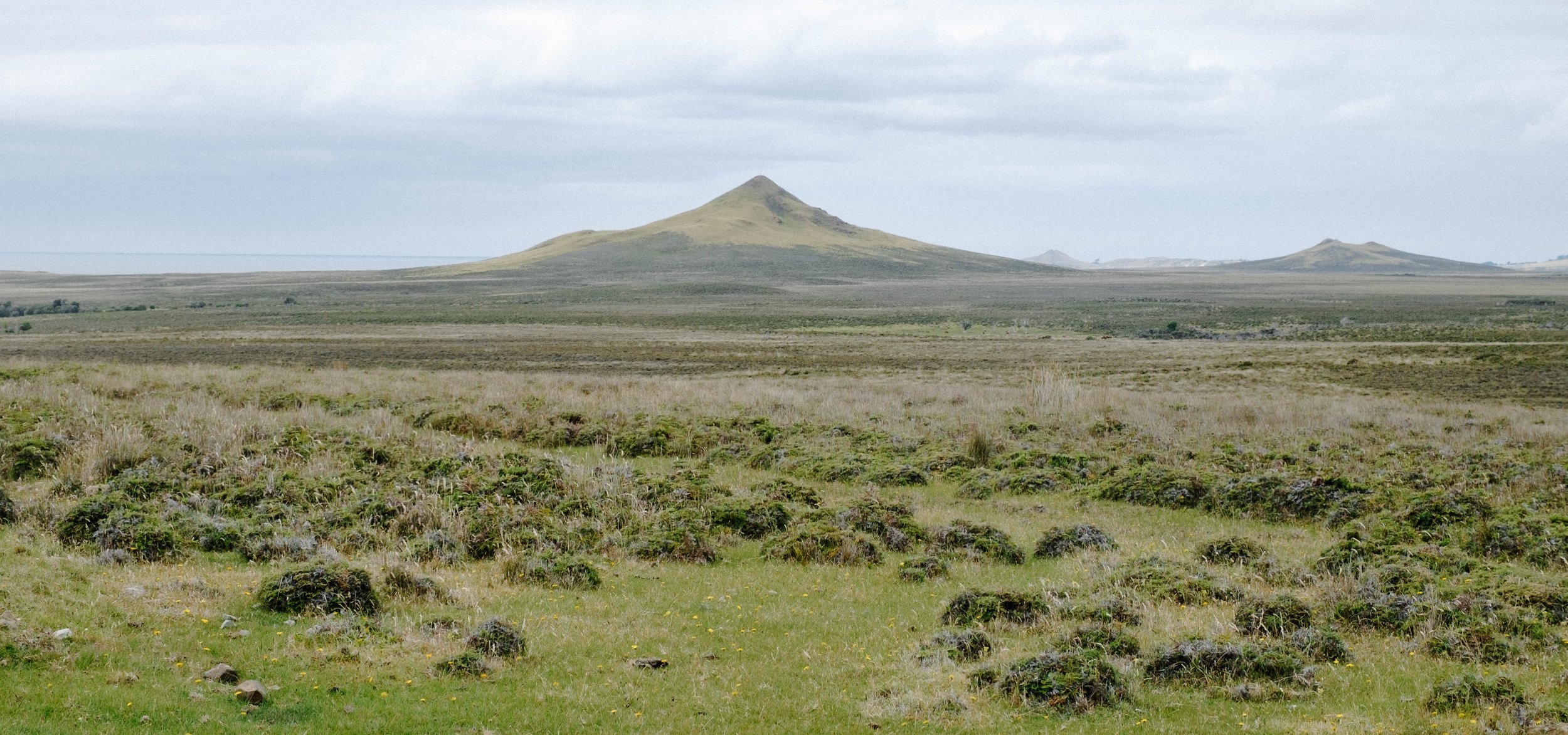

South African Succulent Gardens
Undulating brown hummocks are pierced by the spiny, thick-leaved māhoe (Melicytus crassifolius). Fluffy cream heads of bunnytail grass (Lagurus ovatus) help create a layered separation between plants and together with pig’s ear and Agapanthus praecox, the whole composition takes on a coastal wildflower aesthetic or that of grandma’s unkempt bach.

Rhododendron of the Forgotten Highway
Away from the crumpled cans of Woodstock and Bourbon, these Rhododendron wrestle their orange branches off the ground and into neatly trimmed umbellate forms with the help of grazing animals. Their sunken existence in this hollow makes for a spectacular show, navigating the writhing branches and walking under this long pink cloud is akin to some strangely colourful dream.

Buried in Sand
Scouring and deposition has buried areas which were once forest, now skeletal branches poke their arms from a sandy grave. While the trees did not survive, some of the lianes which once adorned their crowns are holding on in the sand.

Brutalist Freezing Works
Now the ruins represent a concluded but not forgotten chapter in the story of the land and the people of Tairāwhiti, and in the fluctuating fortunes of 20th century New Zealand agriculture and economic development. Owing to the removal of the materials and roof, an emerging ecosystem of coastal forest has been claiming back the ruins for over half a century. Kohekohe (Dysoxylum spectabile), māhoe (Melicytus ramiflorus) and pōhutukawa (Metrosideros excelsa) are starting to form a lush canopy in the microclimate of the concrete ruins.
